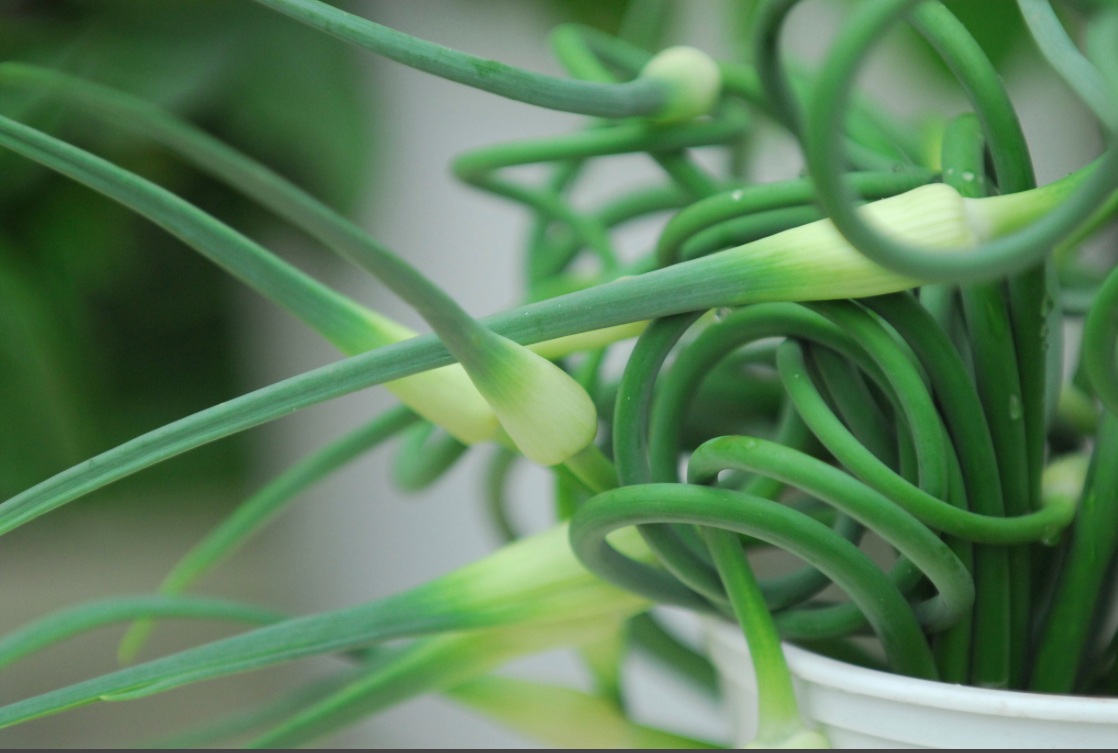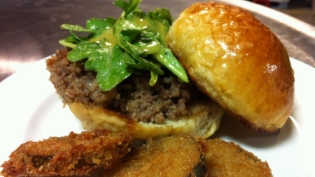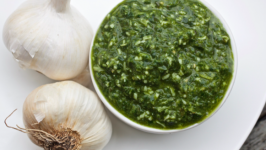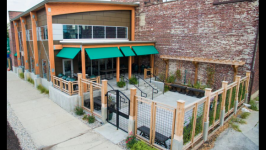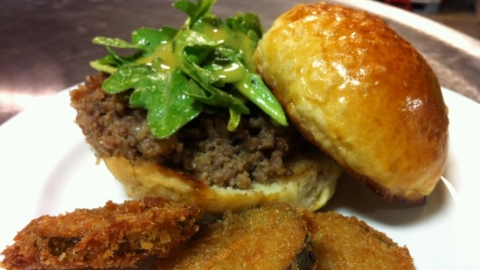The Great Scape: One Of Fall's Foremost Flavors
Say “fall bulb planting” and most people think tulips, daffodils and other spring-bloomers. If garlic is one of your favorite flavors, add that to the list.
There are two types of garlic: hardneck and softneck. Most of what we see in supermarkets is softneck (Allium sativum sativum), which is grown where winters are mild, such as Gilroy, California, which calls itself the Garlic Capital of the World. Softneck garlic can be stored up to a year. Because the necks are soft, this is the garlic people like to braid. It does not form scapes.
Some varieties of softneck garlic may be hardy in Central and Southern Indiana. But fall-planted hardneck garlic (Allium sativum ophioscorodon) is what’s recommended for Midwestern gardeners. Hardneck has a woody flower stalk and is best used within six to nine months after harvesting. Chefs and others say hardneck garlic’s flavor is rich and complex.
Then, there’s elephant garlic (Allium ampeloprasum), which is not a true garlic but is more closely related to leeks.
It’s best to not use garlic purchased in the produce section of the grocery store for planting. First, it’s softneck, and second, it may have been treated with a chemical to keep it from sprouting. It’s best to use bulbs sold as seed garlic. Some garden centers, farmers’ markets and online retailers offer seed garlic for fall planting. The bulb is broken into cloves, and each clove planted yields a new bulb for harvest. Once harvested, gardeners may save a bulb or two for replanting in fall.
When to Plant
In Central Indiana, garlic is planted mid-September to mid-October. The following spring, it sprouts tasty top growth, called scapes, and the bulb is harvested in early to midsummer.
Where to Plant
Select a sunny area that has well-drained, organically rich soil. Plant the cloves, pointy end up, about two inches deep and four inches apart. Cover the cloves with soil and water well. There’s no need to mulch because hardneck garlic is fully winter hardy. However, a light mulch of chopped leaves or straw will help reduce weeds. Garlic is a poor competitor to weeds, so this fall and next spring and summer be sure to keep the area free of these nutrient-robbing plants.
When Scapes Emerge
Next spring, scapes will emerge from the soil and curl into beautiful green sculptures. When the scapes appear, apply an all-purpose granular organic fertilizer, such as Espoma or Jobe’s. If left on the plant, the scapes get woody and sap energy from the bulb, reducing its size. Most gardeners remove the scapes, cutting them off at the soil line. Use the scapes in recipes that highlight their mild, sweet flavor. Eventually, new leaves will emerge and those can be left attached to the bulb.
In summer, when you notice a few of the lower leaves have turned brown, harvest the garlic. If you harvest too early, the bulbs will be small. If you harvest too late, the protective skin, called a tunic, may be missing, which shortens their storage life.
Pulling, Cleaning, Drying and Storing
Hardneck garlic frequently can be pulled from the ground. If it doesn’t come easily, gently loosen the soil with a garden fork or spade and lift the bulbs. Be careful not to bruise the bulbs as bruising shortens their storage life.
Gently brush or rinse the soil from the bulb. Place bulbs with stalks attached on a framed screen, crate or other surface that allows good air circulation. The air should be cool and the device out of direct sun.
It may take about two weeks for the garlic to dry. Once dry, remove the stalk and roots, and store the garlic in a cool (not freezing), dry area, such as a garage or basement.


